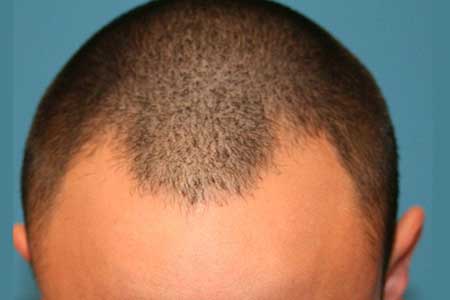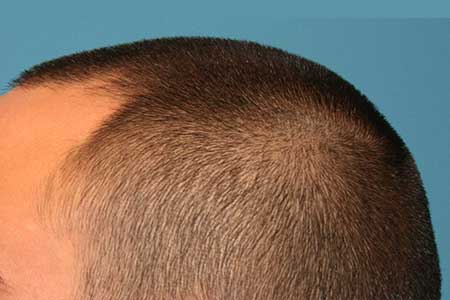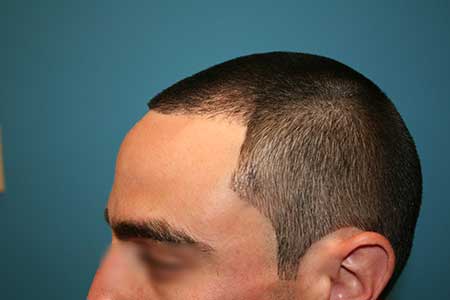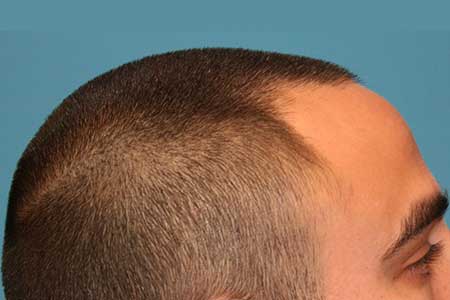Follicular Unit Excision Boca Raton
Conveniently located to serve Boca Raton, Delray Beach, Palm Beach, Fort Lauderdale, Miami, Miami Beach, Naples, Orlando, Tampa, Jacksonville, surrounding areas, throughout the US, and abroad.
Hair transplantation is essentially a two-part procedure. In the first part, hairs are taken from the donor region of your scalp, the back of the head where hairs are typically resistant to male pattern baldness. In the second part of the procedure, these hairs are transplanted into the balding areas. The two leading methods of hair transplantation, Follicular Unit Excision (FUE), and Follicular Unit Transplantation (FUT) are essentially the same when it comes to the second part of the procedure. What’s different about FUE is that it uses a relatively new method of extracting donor hairs. While the traditional method of hair excision, Follicular Unit Transplantation excises thin strips of hair from the donor region and then these strips are dissected into individual grafts, FUE extracts these individual grafts directly, one at a time.
Using a very small circular tool (FUE Device), the doctor makes a tiny punch around each follicular unit consisting of one, two, three, or four hairs. While FUT leaves long, thin scars that are difficult to detect, even on close inspection, FUE leaves only tiny circular both that are easy to camouflage with even short hair styles.
Dr. Glenn Charles’s Approach
Dr. Glenn Charles, a renowned hair restoration expert with decades of experience, has a specialized approach for determining FUE candidacy. This approach is like a math equation, involving several factors that must all by taken into account when creating a surgical plan for such patient.
Dr. Charles asks the patient their age, whether they have a family history of hair loss, and what their goals and expectations are for the hair transplant. He also notes the specific areas where hair loss is occurring.
The extent of hair loss or thinning is measured. The amount of hair left in the region helps to understand the extent of transplantation required.
The size of the donor region (the back of the head and the sides behind the ears) is measured, as is the size of the patient’s head. The hair density at the doner area is analyzed; thinning or weak donor hair negatively affects FUE candidacy.
All of the information gathered allows Dr. Charles to project each patient’s future hair loss, discuss their worst-case scenarios with them, and recommend the best course of action.
FUE Hair Transplant Before And After Photos
Photo Gallery
View before-and-after pictures of real patients of Dr. Glenn Charles
FUE vs. FUT
The FUE procedure has some important advantages and disadvantages when compared to the other leading method, Follicular Unit Transplantation. It produces very small pinpoint scars potentially an important consideration for men who wear their hair very short. However, if multiple FUE procedures are performed on the same individual there can be a general thinning appearance in the donor area. Also, because the FUE procedure is minimally invasive with no large incision or sutures, donor recovery is faster than with FUT.
There are, however, some downsides to FUE. For one thing, because of the exacting nature of the one-at-a-time method of hair transplantation, fewer hairs can be transplanted in a single session. If your hair restoration goal requires a very high number of grafts, you might require more sessions of FUE than you might if we used FUG. As another consequence of FUE’s time-consuming, labor-intensive process, FUE can be significantly more expensive than FUT.
As a final consideration, you should be aware that not all patients are candidates for FUE. The type of hair the patient has plays a role. Patients with thick or coarse hair are typically the best candidates for FUE transplants. If the patient has thinner/finer hair, an FUT transplant may be the better option.
Patients with high-density donor areas are ideal for FUE hair transplants. If you have low-density donor areas, you may need to consider Follicular Unit Transplantation instead.
It can be very difficult to remove intact follicular units from certain patient’s scalps and as a result, a greater portion of these grafts may be damaged than if they’d been removed using FUT. At the beginning of each FUE procedure a small sample of excisions is attempted to determine if the patient is a good candidate for this type of procedure.
To determine which method might be best for you, schedule a complimentary consultation with Dr. Charles. He will evaluate your hair loss, discuss your goals, and help you weigh the risks and benefits of your many options.
Contact Charles Medical Group today to schedule your Follicular Unit Excision complimentary consultation. Dr. Glen Charles has been serving the areas of Miami, Fort Lauderdale and Del Ray Beach for years and is a pioneer in hair transplant surgery. If you are looking to restore lost or thinning hair, schedule your free consultation today!
You will not be disappointed!
So far everything is going great. My experience with Dr. Charles was a pleasure. If my hair fills in even more over the next 4 to 6 months I will really be pleased. If I need more touch ups in the future you can be assured that Dr. Charles will get my business.Scott
FAQ’s
-
How many hair transplants do i need to get the desired results?
It depends on how much hair loss you currently have and the quality and amount of donor hair is available. Future hair loss also needs to be considered in creating a good long term plan. Preventive hair loss options should also be considered. -
Should i do anything to help me improve the results of my hair transplant?
Good overall health helps improve the results of all surgical procedures including hair transplantation. Also using some preventive hair loss options can help as well. We have a full list of options available for you -
Will I have a full head of hair right after having a hair transplant?
That will depend on how much hair loss you have and how many grafts are placed into those areas during the procedure. If a patient has extensive hair loss they may require more than one procedure to obtain coverage over balding scalp. I never want patient to think they are going to have hair as thick as they did when they were a teenager

Meet The Doctor
Dr. Glenn Charles was born in Buffalo, New York and raised in the suburbs of Detroit, Michigan. After receiving his undergraduate degree from Michigan State University he obtained his medical degree from Nova Southeastern University School of medicine in North Miami Beach, Fl. Dr. Charles then completed an internship and residency at Michigan State University affiliated hospitals before acting as the primary physician trainer in hair transplant surgery for a large hair transplant organization from 1997-1999. He opened his own boutique private practice, Charles Medical Group in 1999.
Learn More





